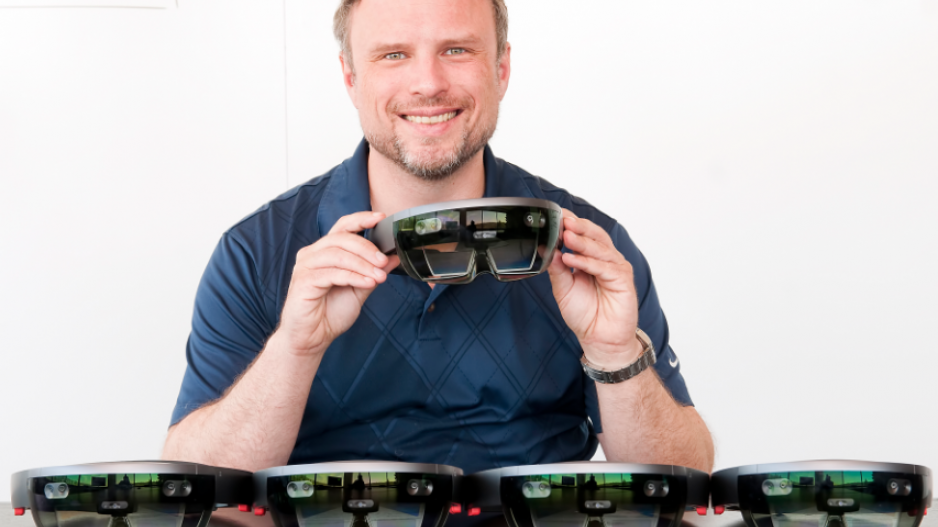Take a pinch of Vancouver’s gaming talent, add a dash of Seattle’s hardware expertise, toss in stronger economic ties between the cities and the Cascadia region may have a sure-fire win in mixed reality technology.
“This is a technology that will sweep across many different industries, from architecture, to industrial design, to healthcare,” Microsoft (Nasdaq: MSFT) president Brad Smith told a Seattle audience at the second-annual Cascadia Innovation Corridor Conference on September 12.
The two-day conference got its start last year in Vancouver with the aim of strengthening the economic ties between the two cities’ tech sectors.
Similar to augmented reality (AR) and virtual reality (VR), mixed reality uses headsets like Microsoft’s HoloLens to project digital images into one’s field of view as if it were appearing before them in real life.
For example, when a user dons the HoloLens, a jet engine in the design stages appears as a giant, three-dimensional hologram in front of someone’s face that could help engineers work out kinks in the mechanics before it goes into production.
“AR/VR is the slap-your-forehead area for growth in the two regions,” John Wenstrup, managing director at the Boston Consulting Group’s Seattle office, told Business In Vancouver following his speech at the conference.
“It is alternatively the chocolate and peanut butter. Vancouver has the chocolate in the form of games developers, digital media companies who are going to be the leading edge of the applications and also the capabilities associated with AR/VR.”
In 2016, Microsoft selected Port Coquitlam-based Finger Food Studios as one of eight global agencies for a special program focused on developing holographic apps for the HoloLens. Finger Foods was given access to Microsoft hardware and other resources to further develop the uses for the HoloLens.
Later in the year, Finger Food Studios unveiled a $1-million, 26,000-square-foot facility known as the HoloDeck, where it’s now developing these apps.
Seattle, meanwhile, possess the “peanut butter” Wenstrup spoke of in the form of being the home base for the HoloLens device.
“And that chocolate and peanut butter coming together to make a delicious candy bar is so obvious. But it’s not happening at the scale and speed required. And the worry is Silicon Valley will basically eclipse us.”
The market for augmented reality is estimated to reach revenues of US$80 billion by 2025, according to a 2016 report from New York-based Goldman Sachs investment bank.
“This is a market that is set to explode,” Smith said.
Meanwhile, Vancouver-based BuildDirect CEO Jeff Booth told the audience during his speech that the advent of mixed reality is akin to that of the mobile phone.
“If you think about the mobile phone, it changed our lives and all the different technologies and companies that sit on top of the mobile phone,” he said.
“This can have that type of game-changing power.”




